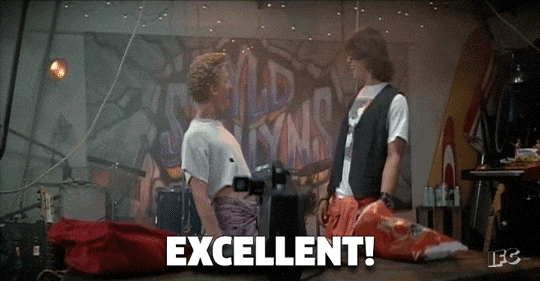A credit score is a three-digit number that can be used to decide some of the most important stages of your life, like whether you get approved for a mortgage, a car financed, or even hired for a dream job.
Your credit score is used by lenders and decision-makers (landlords, certain employers, utility companies, etc.) to determine your creditworthiness. But it can sometimes feel like it determines a person’s actual worthiness, especially if the score is low.
Some landlords won’t rent to people with poor credit. A low credit score can increase your interest rates on everything from credit cards to auto loans to mortgages — that is, if you can even get approved for one. In many states, your car insurance premium may be increased with a low score. While many organizations are actively rejecting how credit scores are used against consumers, it’s a slow-moving shift.
“Credit is the lifeblood of the American consumer economy,” says Jeff Richardson, senior vice president for marketing and communications at VantageScore Solutions, which offers credit scores. “Not all of us have enough cash in our savings and checking accounts to afford large purchases.”
What’s Ahead:
What is considered excellent credit?
Credit scores range from 300 to 850. And the higher, the better. That’s because it’s assumed the higher the score, the lower the risk to lenders.

Source: Giphy.com
There are two main credit scoring systems: FICO Score and VantageScore.
FICO considers any score above 800 to be excellent credit — or “exceptional” in their terms.
VantageScore puts excellent credit at 781 and above, but scores above 750 will allow a consumer to qualify for the best terms for most products.
Although most lenders use these scores to help make lending decisions, they aren’t the end-all-be-all as to whether a person gets approved for credit. Every lender has their own formulas and ideas about who their ideal client or consumer should be. Some lenders aren’t using credit scores at all when deciding whether to extend credit. And some industries or lenders have their own scoring model based on the product being purchased.
“They are free to utilize methods they have devised themselves,” says Colin Palfrey, chief marketing officer at Crediful. “Some lenders may prefer to use the information you have supplied in the application, but all will base their judgment on previous credit history, ability to pay back the loan, assets held, or other information.”
Here is the ranking system for FICO:
- Poor – Under 580
- Fair – 580 to 669
- Good – 670 to 739
- Very good – 740 to 799
- Exceptional – 800+
And here is the ranking system for VantageScore:
- Very poor – 300 to 499
- Poor – 500 to 600
- Fair – 601 to 660
- Good – 661 to 780
- Excellent – 781 to 850
Do you really need an excellent credit score?
The short answer? No. Only 23% of Americans have a FICO Score of 800 and above, according to a report by the company.
Which means 77% of Americans don’t have excellent scores, yet are still able to buy cars, purchase things like cellphones on credit, and get approved for rental apartments and home mortgages.
VantageScore says it aims to be more inclusive in its approach when rating credit. It was the first to not include paid collection accounts in your score and more recently eliminated all medical collection accounts — paid and unpaid.
Read more: Credit bureaus to stop counting medical debt
“We’ve always aimed to make empirical judgments that also benefit consumers,” says Richardson.
Additionally, there are lenders like Upstart and OppLoans, who place lower importance on credit score, in favor of more inclusive factors like how long you’ve been employed and how reliable you’ve been with your rent payments.
There are also subprime lenders who cater to consumers with poor credit. That said, they regularly — and often rightfully — get a bad rap for offering high rates that are deemed predatory. But on the other hand, subprime lenders do give the most financially vulnerable a chance to purchase necessary big-ticket items such as automobiles. And a person with a subprime loan who pays the notes on time will be able to build credit and increase their score. They aren’t locked out of the “credit game.”
Read more: Best personal loans for poor credit
Really, the advantage of an excellent credit score is the bargaining power you bring when it’s time to negotiate deals. If you have an excellent score, be sure to use it in every financial situation where your credit report will be pulled.

Source: Giphy.com
With an excellent credit score, you are more likely to qualify for perks like credit cards with airport lounge access, or to purchase items with no money down.
All this to say, the difference between good and excellent credit isn’t life-changing but there are some definite reasons to push for excellent or exceptional if you can.
Read more: Best credit cards if your credit score is above 750
What factors make up an excellent credit score?
FICO and VantageScore have slightly different approaches to how they calculate an excellent credit score.
FICO Score
“Your FICO Score is unique, just like you,” says Tom Quinn, vice president of FICO Score.
Here’s his breakdown of how FICO Scores are calculated, based on five categories:
- Payment history (35%). How you’ve paid your bills in the past — whether you’ve paid on time or had late or missed payments. The more severe, recent, and frequent the late payment information, the greater the impact.
- Amounts owed (30%). The total balance owed, how many accounts have balances, and how much of your available credit you’re using. In addition, your FICO Score can consider closed accounts with balances when calculating your utilization.
- Credit history length (15%). How long your credit accounts have been established, including the age of your oldest account, the age of your newest account, and the average age of all your accounts.
- Credit mix (10%). The different types of credit accounts being used or reported, including credit cards, retail accounts, installment loans, and mortgage loans. Your credit mix will become more important if your credit report doesn’t have a lot of other information on which to base a score.
- New credit (10%). How many new accounts you’ve recently opened, and whether you’ve been rate-shopping for a single loan or applying for multiple new credit lines. Opening several new credit accounts in a short period of time indicates greater credit risk.
VantageScore
VantageScore says it doesn’t like to use pie charts for specific breakdowns when it comes to describing how its scores are calculated. Instead, the company prefers to use a scale from “extremely influential” to “less influential.”
“How information is weighted in your score depends on what information is in your score,” Richardson says. “If you have one credit card, chances are missing a payment or having a high utilization on that specific card is going to weigh more than someone who has 11 different accounts”
Here is VantageScore’s breakdown of how it calculates scores:
- Most influential: Total credit usage, balance, and available credit. For instance, if you have a credit card with a $10,000 limit, try not to carry a load that’s more than $3,000 — or 30%. It’s not good to be “credit stressed.”
- Highly influential: Credit mix and experience. Being able to show that you can manage a variety of credit (a credit card, mortgage, and/or car loan) shows that you are responsible regardless of the type of credit issued. It could be an installment loan or revolving credit and you know what to do to manage the payments.
- Moderately influential: Payment history. Lenders generally believe your past is an indicator of your future behavior. Consistently paying bills on time is the best way to build your credit score. Missed payments ding your credit score, and the longer it takes to “make good” on a missed payment, the more it hurts your score.
- Less influential: Age of credit history. Just like in life, people trust people they know longer. The longer you’ve had a credit account, the better.
- Less influential: New accounts opened. Many lenders are skeptical of people who open too many accounts in a short period of time. They think they may be in a dire financial situation. Try to space out your credit/loan applications.
Read more: What’s your credit utilization ratio and how does it affect your credit score?
Other differences between FICO and VantageScore
While the information necessary for both a VantageScore and FICO Score are very similar, the main difference is in how the data is used, says Palfrey at Crediful. The differences are:
- Credit history. To generate a FICO Score, you need to provide credit history from an account that has been open for at least six months. The VantageScore method allows for accounts that have been active for only one month and therefore is more applicable to those new to credit.
- Credit inquiries. A credit inquiry is when a request is submitted for information on your file. A hard request comes from a lender after you have applied for credit, and a soft request comes from either a consumer requesting information on their own file or a lender pre-screening you. The FICO method will count multiple requests of the same kind within a 45-day limit as one hard inquiry. VantageScore reduces this limit to 14 days and the inquiries can be for different types of credit.
- Trending data. Your FICO Score rating is based on the score achieved at the time your score is generated. Your VantageScore, however, is built up over time. It can include up to two years of spending and credit history.
How to get an excellent credit score
If you’re currently at a lower tier and want to boost yourself into excellent territory, the most effective way is to “aim to never miss any payment dates and pay off any outstanding credit as quickly as possible,” says Palfrey. “Try to limit the number of applications for new credit submitted.”
A few other ways to get an excellent credit score:
- Make sure your credit card balance is less than 30% of your card limit. Pay your credit card bill twice or more in a month if you find yourself using more than a third of your credit limit.
- Don’t close your credit card account, even if you’ve paid off the balance. It looks good to have a long history on your credit report.
- Ask for a higher credit limit on your credit card (but don’t use it!), which would help your credit utilization ratio.
- Check your credit report for errors. If you find any wrong information on your report, get it removed.
Read more: How to improve your credit score, step by step
How to check your credit score
You can check your VantageScore and FICO Score for free through websites such as CreditKarma, Credit Sesame, and others.
If you’d like to monitor your credit score, Experian offers the service for free. If you’d like to pay for a credit monitoring service, Transunion charges $24.95 monthly and Equifax offers several credit monitoring packages, starting out at just under $10 per month.
Read more: How to get a free credit report
The bottom line
While you don’t need an excellent credit score to get a loan or credit card, or to buy a house or a car, the higher your score is, the more perks you’ll get and the lower your fees and interest will be.
That being said, there are more and more lenders who are forgoing traditional credit scores in favor of more inclusive, alternative credit reporting methods. They’ll consider factors like your employment and rental history, not just the three-digit number stamped on your file.
Featured image: Ground Picture/Shutterstock.com


